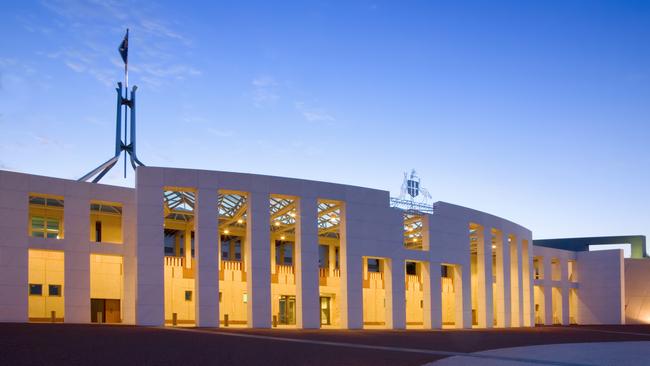Budget 2020: Public sector wages blow out by nearly $5bn as Treasury and Social Services workforces expand
Australia’s public sector wage bill has ballooned by nearly $5bn over the past financial year, as the government turns to an 8000-stronger public service workforce.

Australia’s public sector wage bill has ballooned by nearly $5bn over the past financial year, as the government turns to an 8000-strong public service workforce to manage the coronavirus crisis.
The commonwealth’s employee and superannuation expenses in the 2019-20 financial year were $49.2bn, according to the budget papers, compared to nearly $46bn spent on public sector wages the previous year.
Large staff increases in Social Services, Infrastructure and the Treasury to deal with the economic crisis caused by the pandemic are expected to grow the wages bill further, with the total amount tipped to hit $48.3bn by 2023-24.
“Agency staffing levels move over time to reflect the various policy decisions of government, and this has been reflected through an increase in staffing in 2020-21,” the budget papers say.
“ASL is expected to increase beyond 2006-07 levels in 2020-21 as the government implements the COVID-19 Economic Recovery Plan and delivers essential services to all Australians.
“Significant ASL increases will occur in a number of portfolios in 2020-21, including Services Australia, Treasury and Infrastructure. However, much of this additional ASL is temporary, reflecting the nature of the response to COVID-19.”
Social Services will expand its workforce by more than 1100 to deal with the unemployment crisis and beef-up the National Disability Insurance Scheme, with nearly 800 new workers at the NDIS and more than 300 new workers at Services Australia and its agencies, such as Centrelink.
Treasury is expected to grow its workforce by more than 1000, with increases of nearly 300 at both the ATO and the Australian Bureau of Statistics.
The Australian Public Service’s staffing levels will be at their highest peak since Tony Abbott led the Coalition to victory in 2013, with nearly 10,000 positions restored since the government slashed them in the 2014 budget.
This year’s budget papers say the increases will be temporary, and the government plans to return staffing levels to what they were in 2006-07 — John Howard’s last year in office — when there were only 238,622 public sector workers on the payroll.
“Our focus is on supporting job creation through private investment and economic growth as part of our JobMaker Plan,” the budget papers say.



